Each of the 50 states, the District of Columbia, and the Department of Defense Education Activity will select one middle level and one high school principal to represent their state. State winners are selected from applications submitted to the state associations.
Each state’s selection process and deadlines vary. Application information for each state may be found by contacting your state affiliate.
2017 State Principals of the Year
Alabama

Van A. Phillips, Sr.
Center Point High School
Center Point, AL
Grades: 9–12
Students: 795
Region: Urban
• Building relationships
• Community engagement
In May 2005, I was asked to lead and transform the lowest-performing high school in our district. The graduation rate at that time was 49 percent, and the dropout rate was 25 percent. The school board decided that the school needed to improve or it would face closure. From the onset, I understood that students in high poverty schools have unique challenges. My first task was to address the school climate and culture, and I created a culture of personalization for all. Over the years, structures have been created to provide students with support and a sense of belonging. A prescriptive advisor/advisee program has been established to address both emotional and intellectual quotients of students. In addition, specific strategies have been employed to develop positive relationships with students. Finally, faculty and staff partner with students, parents, and community leaders to promote a sense of efficacy and ownership of learning.
Alaska

Kersten Johnson-Struempler
South Anchorage High School
Anchorage, AK
Grades: 9–12
Students: 1,502
Region: Urban
• Social and emotional learning
• Developing CTE pathways
What started as an idea to create more student ownership and engagement at South Anchorage High School (SAHS) turned into a groundbreaking program that is giving students unprecedented experience in their desired career field. I’ve led the development of a media arts career pathway, an opportunity that began with daily student video announcements and morphed into a school-business partnership that now features a range of courses, including a class allowing SAHS students to earn an FAA license to fly unmanned aerial drones. In 2017, the first group of students in the nation earned their certification. The drone work supports Alaska’s industries—such as film, advertising, oil, fire, and fish and game—where visuals in a wilderness landscape would otherwise be difficult to obtain. The media arts pathway has a positive impact on the school’s culture by creating opportunities for further student involvement in our school and community.
Arizona

Jim Brunenkant
Flowing Wells High School
Tucson, AZ
Grades: 9–12
Students: 1,700
Region: Urban
• Students relationships
• Effective faculty meetings
My focus has been my 100 percent initiative, a commitment to 100 percent of the students pledging to obtain a post-secondary education through college enrollment, vocational training, or the military. This initiative has led to 93 percent of the class of 2017 committing to post-secondary plans and a 98 percent graduation rate. I am dedicated to the success of all students and actively work to remove barriers of access. As I’ve pushed for more Advanced Placement participation (increasing the percentage of the student population enrolled from 20 percent to 45 percent), I’ve also remained steadfast in my belief that all students have access to a rigorous course of study; I do not support limiting access because I know the most important condition for success is student determination. Many students have not demonstrated outstanding educational performance only to reverse course with maturity or a change in their personal circumstances. Students must be continually provided second chances to stretch themselves academically.
Arkansas

J. Lance Arbuckle
Rogers New Technology High School
Rogers, AR
Grades: 9–12
Students: 647
Region: Suburban
• Instruction via project-based learning
• Learner culture, both student and adult
The use of wall-to-wall project-based learning in all classrooms has enabled our school to help students engage in a more personalized learning environment. Our student learners are able to ’run the rabbit hole’ and discover, as well as apply, their learning to their own particular needs. This is best exemplified by our student work over the last year in our team-taught humanities classrooms. Each year, our student learners participate in the National History Day competition. This event brings together exhibits, documentaries, and websites from students around the world that best highlight the national theme. In June 2017, our school had a team of three sophomores who placed first in this competition with a documentary on the life of Archbishop Oscar Romero. From the spark that began in their humanities class, they were able to run with their interest and produce a high-quality product that illustrated their learning.
California

Gina Zietlow
Richard Gahr High School
Cerritos, CA
Grades: 9–12
Students: 1,983
Region: Suburban
• Building partnerships with staff and union representatives
• Student activities and athletic programs
My personal success story stems out of developing collaborative relationships with faculty, empowering them to lead as Richard Gahr High School became a STEAM Magnet School. A vision for creating a Magnet program with pathways connected to traditional content areas was born out of our work with site union representatives and department chairs. Teacher leaders stepped forward to establish pathways in biomedical sciences, computer science, engineering, and arts technology. These teacher leaders embraced new curricular models like Project Lead the Way; attended training during the summer; and developed partnerships with local businesses and universities. These pathways provide students with opportunities on par with our local colleges. As the pathways have continued to grow, they are now part of an overall program of career technical education options that also includes automotive technology; communication technology; global trade and logistics; and pharmacy, allowing all students to explore interests and gain real-world experiences while in high school.
Colorado

Eric Rauschkolb
Niwot High School
Niwot, CO
Grades: 9–12
Students: 1,300
Region: Suburban
• Increasing student ownership and participation in their school
• Dealing with difficult employees
When I first arrived at Niwot High School (NHS), the school was doing well but was stuck in a rut. One of the first things that I did was add the expression, “At Niwot High School, you matter,” to our logo. This was representative of our desire to go in a more student-centered direction on every front. Since that time, NHS has doubled the number of clubs, now has 91 percent of its students involved in some type of extracurricular activity, and started a late bus so that students could participate in after-school activities (sports, clubs, tutoring, etc.). The dedication, enthusiasm, and expertise of the staff, combined with student-centered leadership and an incredibly supportive parent community, have resulted in our school being recognized as The Washington Post’s top-ranked public high school in Colorado—on their annual “America’s Most Challenging Schools” list—for the first time in the school’s history.
Connecticut

Lorrie Rodrigue
Newtown High School
Sandy Hook, CT
Grades: 9–12
Students: 1,682
Region: Suburban
• Writing
• Creative thinking
Steven Covey, author of The 7 Habits of Highly Effective People, said, “Every person in the organization must change inside their hearts and minds, so that they themselves become principle-centered.” As high school principal in Sandy Hook, my goal has been to focus on building a personalized, supportive, and resilient learning environment where members feel cared for, challenged, respected, and safe. In order to create a strong internal capacity, we created teacher leadership roles (academic officers) to support struggling learners; championed teacher partnerships designed to foster cross-discipline collaboration; implemented personalized learning community time for students to study and research; implemented an advisory program to foster team building; established new academic pathways in engineering and technology; and invited parents during morning breakfasts to share their input. The building of capacity and strong collaboration has been integral in our efforts to solve problems, make improvements, and encourage all members of the school community to make positive contributions in the best interest of all learners.
Delaware

Stanley Spoor
Howard High School of Technology
Wilmington, DE
Grades: 9–12
Students: 860
Region: Urban
• Implementing a 1:1 iPad or laptop program in schools
• Developing a positive staff culture
In spring 2012, our school made a decision to initiate a 1:1 iPad program the following school year. The goal in doing so was to transform the teaching and learning process to advance teacher effectiveness and student outcomes. While the first year or two in particular included several challenges, mostly logistical, the fruits of our labor emerged and did so more strongly as time went on. Proficiency rates on the state assessment increased from below 50 percent to over 80 percent. As evidence, our school has been recognized by U.S. News and World Report as a Bronze Medal School in four of the last five years and has been recognized by the Delaware Department of Education twice for academic achievement.
DODEA
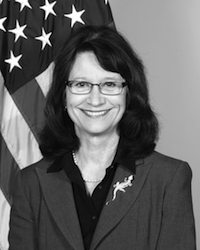
Sharon O’Donnell
Ramstein High School
APO AE, Germany, DODEA
Grades: 9–12
Students: 1,014
Region: Urban
• Communication
• Community relations
In an effort to leverage a caring culture with high expectations, Ramstein High School started an Adopt-a-Student program. Teachers volunteered to “adopt” students who struggled academically due to poor organizational skills, failure to complete or turn in assignments, or class attendance. Teachers in the program met with their adopted students daily to monitor their progress and provide strategies to improve academically. Among the benefits of the program has been increased staff collaboration. Teachers also became advocates for their adoptees, resulting in rich conversations among the staff revolving around student learning. As the program progressed, quarterly data was presented at faculty meetings. The message that has come across as a result of our program is loud and clear: We are not going to give up on our students. The previous year’s success has encouraged additional teachers to step forward, increasing the number of students who will be served in the program.
Florida

Anthony Lockhart
Lake Shore Middle School
Belle Glade, FL
Grades: 6–8
Students: 677
Region: Urban
• School and community collaboration
• High expectations
I truly believe that education is the great equalizer—that no matter what socioeconomic or racial background an individual comes from, they can accomplish anything if they obtain an education. Lake Shore Middle School had previously been plagued with discipline problems, an exasperated faculty, and a lack of purpose. When I became principal, I started by interviewing teachers and community members, then worked with them to change the school culture. We eventually went from an F- to a C-rated school and were recognized by Florida Governor Rick Scott for being in the top ten percent of middle schools in five categories. This achievement could not have been possible without the efforts from a supportive community, a focused group of educators, and a dedicated administrative staff. We believe that when our students win, we win, and we will continue to improve our school with that in mind.
Georgia

Tommy T. Welch
Meadowcreek High School
Norcross, GA
Grades: 9–12
Students: 3,215
Region: Urban
• Building teacher/leadership capacity
• Involving business partners
My passion is empowering others to accomplish their dreams through innovative educational practices. That passion was coupled with the community goal of maximizing the potential of every person involved while creating students who acquire skills to obtain good, high-paying jobs. In order to do that, we established cross-functional teams for collaborative involvement in the school improvement process. The work is grounded in the TQM, CQI, Breaking Ranks, and P.E.L.P coherence framework research. This work has transformed one of Georgia’s large comprehensive urban high schools into five smaller academies with fully functioning student businesses. The school reorganization employs a distributive leadership model whereby each academy is led by an assistant principal, lead teacher, counselor, and students. Layering of resources include district, state, and national business partners that have created a school of students who are entrepreneurial thinkers with high academic engagement.
Hawaii

Stacey S. Oshio
Olomana School
Kailua, HI
Grades: 7–12
Students: 98
Region: Rural
• Collaborative/shared leadership and decision making
• Trauma informed care
Olomana School uses the Instructional Leadership Team and Academic Review Team (ILT/ART) process, which includes a cohort of teacher leaders, to steer our school improvement process and transformation. The ILT looks at our powerful instructional practices, conducts walk-throughs and data collection, and works with our data teams. The ART focuses on monitoring our plan and developing and providing professional development based on data and teacher feedback. Together, the ILT/ART collaborate and communicate with the faculty and staff. This process has empowered the entire faculty and created a collaborative and collegial culture as we build the capacity of the school. It also helps us focus on our vision and mission while maintaining our student-centered environment. We believe that building relationships with each student is the foundation of a successful school, but we also understand we need to increase the rigor of instruction.
Idaho

Kasey Teske
Canyon Ridge High School
Twin Falls, ID
Grades: 9–12
Students: 1,212
Region: Suburban
• Creating college-going culture
• Schoolwide leardership and literacy emphasis
I’ve worked extensively with stakeholders to create a college-going culture at my school. The school’s mission of empowering all students for success in post-secondary education, career choice, and life drives the collaborative effort. As a result, parent committees provide regular career presentations during advisory periods. Administrators and teachers continue to work at creating a cutting-edge advisory program in which students build a relevant post-secondary plan and receive mentoring toward graduation and college-and-career readiness. Counselors meet more of students’ social-emotional needs, while advisers take an aggressive approach to promote dual-credit classes and get all seniors accepted to college with a financial plan. Incremental successes culminated this year with the highest dual-credit enrollment in the Magic Valley Region, the highest graduation rate in the district, and with 80 percent of our seniors graduating with a solid post-secondary plan.
Illinois

Jack Baldermann
Westmont High School
Westmont, IL
Grades: 9–12
Students: 451
Region: Suburban
• Professional learning community concepts and implementation
• Motivating disengaged students
At Westmont High School (a Title 1 school in Illinois) we have virtually eliminated dropouts, suspensions, and major disciplinary incidents. At the same time, we have significantly increased student achievement, including achieving a 100 percent graduation rate for Latino and African-American students four years in a row, as well as one of the most-improved Advanced Placement programs in the nation. Our focus is on being the most compassionate citizens possible, with the goal of serving our community. We have implemented professional learning community concepts with an emphasis on collaborative teamwork and a passionate commitment to “learning for all.” We have spent years building a culture where we do whatever it takes, focus on what we can control, and refuse to take no for an answer when it comes to student achievement gains. S.M.A.R.T. goals and a careful analysis of student performance information have been essential to increasing student success. We focus on positive recognition to fuel growth.
Indiana

Nathan Boyd
Grissom Middle School
Mishawaka, IN
Grades: 6–8
Students: 597
Region: Suburban
• Creativity
• Systems of support–Response to intervention
Setting the academic bar high is a priority; equally as important is meeting the social and emotional needs of students. With help from business partners, we’ve transformed a classroom into Club Honors, a modern interactive game room for honor roll students. VIP card owners are able to use the room as long as their grades stay within honor roll ranges. Positive reinforcement made available to all students is free after-school tutoring three days a week where students earn a work score that makes them eligible for different study rewards—we call it the gamification of our tutoring program. Other creative ways to personalize school experiences include the creation of a drum brigade, designed specifically to involve students who are not actively engaged in the school experience. The ultimate goal is to provide students with academic support while building a sense of school belonging and confidence within their own untapped abilities.
Iowa

Cindy Barwick
Sheldon Middle School
Sheldon, IA
Grades: 5–8
Students: 306
Region: Rural
• Building climate/culture
• Increasing teacher leadership
The best success that we had at Sheldon Middle School came when we implemented a tutorial or intervention time into our regular school day. This time allows for remediation and extension activities for students who need them. During tutorial time, teachers offer open or closed sessions to students. If a session is closed, individual students are required to attend the session to complete the activities designed to extend or remediate a particular topic. If a session is open, students self-select and attend sessions of personal interest or need. Through the use of our tutorial time, we have seen an increase in skill acquisition across all four grade levels. The number of students qualifying for summer school has declined by 60 percent. Finally, the conversation within our school has shifted from a focus on grade acquisition to one of skill acquisition, which is a far richer conversation.
Kansas

Benjamin Jimenez
Decatur Community Junior/Senior High School
Oberlin, KS
Grades: 7–12
Students: 154
Region: Rural
• Great communication/visibility
• Being fair and consistent with staff and students
I focus on service, emotional needs, and a positive learning environment in the school. Visibility as a principal is the best way to help students feel safe. It is a common practice for my staff and myself to be in the halls every passing period, and I work to be in classrooms daily. It gives me a chance to see kids develop into young adults in our school. We reward students that show respect by doing things out of the ordinary. We praise students for their achievements. We have involved our kids in community service projects to help the community and school. It has had a positive impact on student achievement and participation in our school and community. Amongst the new state changes and rigor of academic requirements, we have been successful in creating some really neat people in our school. To me, this is truly breaking the ranks in achievement!
Kentucky
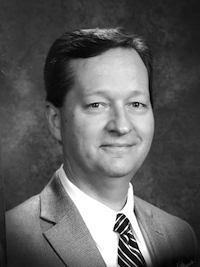
Bobby Bennett
Middlesboro High School
Middlesboro, KY
Grades: 9–12
Students: 393
Region: Rural
• School culture/growth mindset
• Using student data to improve academic performance
School improvement at Middlesboro High School has meant improving the culture and learning climate. At the onset, we decided our focus would be on safety and a positive approach to our work with student and community relations. Issues involving corrective action and discipline were all approached respectfully and privately. Publicly, we constantly sought to find those who were doing good things for our school and each other. Our days begin with “shoutouts” on student and teacher achievements over the public address system. Faculty meetings have shifted from discussions of what’s wrong to what’s right and how we can continue to improve. Our entire staff utilizes a “growth mindset” approach to teaching, learning, and support. As principal, I’ve established many teacher leader teams that help me oversee each of our school’s programs. My principal-student advisory council contributes to our continuous school improvement plans. We all work together to succeed.
Louisiana

Sedric Clark
Mansfield High School
Mansfield, LA
Grades: 9–12
Students: 425
Region: Rural
• Collaborative leader
• Visionary leader
One of the greatest stories that comes from Mansfield High School is the increase in the graduation rate. In 2010, when my team of administrators and I were appointed to the school, the graduation rate was 66 percent. Graduation was something that happened when students were told that they could graduate. They did not seem to know the graduation requirements and did not seem to have any control over their graduation—or their future. My team and I had goal-setting meetings with every student on campus. In these meetings, students became aware of their academic standings and set goals for their future. In addition, they set behavioral, school participation, and community service goals. We met with students to update their progress twice a year and we celebrated their success when they achieved their goals. Students were in charge of their learning, success, graduation, and future.
Maine

Daniel Welch
Boothbay Region High School
Boothbay Harbor, ME
Grades: 9–12
Students: 195
Region: Rural
• School climate
• Public relations
In 2012, only 55 percent of our seniors applied to a post-secondary institution. Our student FASFA filing rate was barely 49 percent. Working with the guidance department we created programs and systems to make college more accessible. In 2015, 80 percent of our seniors applied to post-secondary institutions. We were in the top 6 percent for the state’s FASFA filing rates. Since 2013, we have been working to close the achievement gap by restructuring our school day and offering significant remediation and support time. At the conclusion of the first quarter of 2013, 29 percent of our students qualified for honor roll. In 2015, this number increased to 47 percent. In 2011, only 7 percent of our student body took at least one AP course, but by 2014, this number more than doubled to 18 percent. With increased enrollment, our scores have also remained strong. From 2011–2015, we have averaged 69 percent of our test takers earning a 3 or higher.
Maryland

Sandra Reid
Pikesville High School
Pikesville, MD
Grades: 9–12
Students: 840
Region: Suburban
• Fierce advocate for students
• Tireless in my efforts to see school progress
Upon my arrival, Pikesville High School (PHS) had a poor climate and declining performance metrics. This spurred me to spearhead school spirit campaigns and to create the “Pride, Honor, Success” branding that now permeates the school. I galvanized the school community through opportunities for authentic student voice; restorative practices; achievement recognitions; augmentation of academic programs and enrichment activities; effective communication; and mentoring programs. I assisted in making PHS a “lighthouse” high school and have overseen the digital instructional transformation to a 1:1 learning environment through the use of differentiated professional learning communities and common planning time. This year, PHS has been acknowledged as a potential future AVID Site of Distinction; was named as one of Washington Post’s Most Challenging Schools; attained one of the highest graduation rates in the county (over 95 percent); and has had over half of its students successfully complete AP classes across all disciplines, including AP Capstone.
Massachusetts

John K. Clements
Nipmuc Regional High School
Upton, MA
Grades: 9–12
Students: 592
Region: Suburban
• Technology integration
• Authentic learning
I believe in collaborative leadership. This is demonstrated through my work with my school’s 1:1 learning program, which provides all students and teachers with iPads to support learning. Through a collaborative visioning process, I led a group of students and educators who visited other 1:1 learning schools, shared in programmatic decision making, and established a vision for technology integration that is an extension of Nipmuc Regional High School’s beliefs about learning. I supported teachers’ efficacy with technology by providing tiered professional development workshops, sharing technology-based best practices, and designing model technology integration S.M.A.R.T. goals. The outcome of this work is visible in the school’s culture. Multiple choice and fill-in-the-blank questions have been replaced by student-created videos and digital portfolios. Teachers access digital formative assessment tools to make instruction data-driven and provide real-time feedback on learning. Students maximize digital tools for workflow and collaboration, making learning more efficient, creative, and inspiring.
Michigan

Lisa Andrea Phillips
Cass Technical High School
Detroit, MI
Grades: 9–12
Students: 2,500
Region: Urban
• Securing community partnerships
• Branding your school
Under my leadership, I have implemented several successful initiatives. These efforts resulted in Cass Technical High School being named an International Baccalaureate School, the only high school in Detroit Public Schools and Wayne County to receive this honor. Out of over 2,500 pupils, the college entrance and graduation rate is 98 percent, with 2017 seniors having earned $60 million in scholarships. Over 100 seniors to date have graduated from our Wayne County Community College District and high school dual enrollment program with their associate degree and, in partnership with the University of Michigan’s “Doctors of Tomorrow” Program, Cass Tech students get mentored in medicine by current medical students. Additionally, over 200 students have had summer internships with Ilitch Holdings and UAW-Ford, during which they work with business executives in the fields of accounting, entertainment, automotive design, and engineering.
Mississippi

Chris D. Fleming
Lewisburg High School
Olive Branch, MS
Grades: 9–12
Students: 1,011
Region: Suburban
• Building culture in a newly opened school
• Being innovative with opportunities for students
As the principal of a high school that is just a decade old, branding our culture has been a focus for me during my four years at Lewisburg High School. During a conversation with a prominent senior in our class of 2016, I asked what he thought we could do to increase our student spirit, and he responded with a surprising statement: “Embrace the hate.” We are sometimes chided by other area schools because we are located in what was once a corn field. So, we have answered back with our Children of the Corn Spirit Club. Our freshmen now arrive on campus each year excited and filled with pride to “embrace” their membership in the Children of the Corn. You can now follow all things Patriot at @COTCSS.
Missouri

Renee Trotier
Rockwood Summit High School
Fenton, MO
Grades: 9–12
Students: 1,315
Region: Suburban
• Providing high-quality professional development
• Building and living a truly shared vision with school community
After noticing declining reading scores on the ACT, I worked collaboratively with my assistant principals and teacher leaders to build instructional leadership capacity as we worked together on a successful building-wide literacy initiative. First, I created support for students reading below grade level by providing professional development (PD) for their teachers and librarian. Together, these five teachers, an assistant principal, and I planned a reading cadre to build the capacity of 20 teachers. This group of 20 planned PD for the entire staff, served as literacy coaches, and led a schoolwide reading campaign. As a result of this work, our students enjoyed remarkable gains on their ACT, state tests, and AP Language scores. However, the greatest success was creating a culture of readers who now read for pleasure. Our library circulation jumped from 8,932 to 18,234 in two years, and staff saw students reading and discussing books throughout the school day.
Montana

Gordon Klasna
Eileen Johnson Middle School
Billings, MT
Grades: 6–8
Students: 363
Region: Rural
• Building relationships with staff and students
• Involving staff in decision making
As a school, we have worked very hard to reduce office discipline referrals and to improve our school climate. The best way I have found is to create positive relationships with students and to have routines in the classroom so there are no surprises. We based what we do off the instructional framework put forth by education consultant Mel Riddile. Our staff greet students in the hall; in the classroom, students begin with a bell ringer followed by instruction and practice. This is done in a variety of methods in the hopes of reaching all students through their different learning styles. Class ends with an exit ticket that allows teachers to gauge what was or was not learned so they can make adjustments to what is done the next day in class. The positive interactions in the hallway between staff and students have carried over into the classroom.
Nebraska

Brandon Mowinkel
Milford Junior/Senior High School
Milford, NE
Grades: 7–12
Students: 330
Region: Rural
• Telling my school story and relationships
• Advocacy/social media use
Student success can be defined in many different ways, and it is our responsibility to provide individualized learning opportunities to ensure our mission is being met. At Milford High School (MHS), we work tirelessly to guarantee all our students are receiving a high-quality education that fits their individual needs and ultimately leads them to becoming productive citizens. My goal is to have students leave MHS with at least one employable skill and a passion to follow. Over the past five years, our dual credit program has expanded exponentially, with nearly three-quarters of all graduating seniors leaving high school with at least some college credit earned. Additionally, students are also encouraged to explore passions in areas not offered in a traditional classroom setting through our Senior Seminar program. Programs such as these allow students to take ownership in their learning and get a head start in life after high school.
Nevada
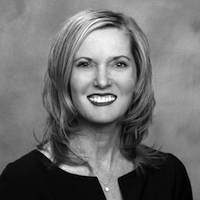
Jillyn Pendleton
Ed W. Clark High School
Las Vegas, NV
Grades: 9–12
Students: 3,100
Region: Urban
• Advanced Placement expansion
• College and career readiness
It has been my greatest honor to see the shift in our school culture to an academic climate enriched with high expectations so every student is afforded the opportunity to reach their greatest potential. Our campus has instituted curriculum, professional development, and programs targeting the specific needs of each student our school serves. In particular, we have expanded our AP course offerings with more than 1,700 tests taken this school year, as well as adding an Honors Academy to engage our students in rigorous coursework. This has been my charge and responsibility throughout my principalship, and the results are tangible. Clark High School (CHS) has realized substantial achievement gains throughout our school community. Most notably, our graduation rate has improved from 59 percent to 82 percent and our Advanced Placement mean pass rate improved from 35 percent to 77 percent. CHS is an inner city school that is beating the odds.
New Hampshire
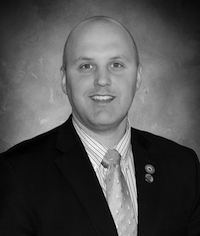
Brian M. Stack
Sanborn Regional High School
Kingston, NH
Grades: 9–12
Students: 665
Region: Suburban
• Competency-based, student-centered learning
• High school redesign
Over the past decade, the story of Sanborn Regional High School (SRHS) has been one of self-discovery and positive change. Before that, SRHS had a reputation in the state as a mediocre school that lacked direction and consistent instructional practice. When I started as principal, the school community made a pledge to redesign itself, making a bold commitment to think differently about education in order to promote learning for all, whatever it takes. Today, the school is considered to be a national leader in the personalized learning model known as competency-based learning. In 2014, my school was selected as one of four schools in the country to participate in a special pilot program, the first federal waiver to the No Child Left Behind accountability model. The pilot, known as the Performance Assessment for Competency Education model, has been a huge success and paved the way for states to pursue similar waivers through ESSA.
New Jersey
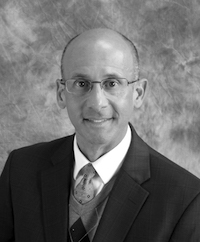
John Farinella
Rahway High School
Rahway, NJ
Grades: 9–12
Students: 985
Region: Urban
• Strong writing skills
• Navigating legal issues that touch and concern my high school
Freshman transition at Rahway High School brings new meaning to the concept of personalizing the high school experience. All freshmen complete the Freshman Seminar/Financial Literacy course, where they study career interests, lifestyle choices, leadership styles, team building, ethics, financial planning, financial literacy, and other strategies to maintain overall wellness. Along the way, each student develops a 10-year plan that maps his/her lifestyle and academic goals into a set of personalized expectations for the high school years, post-secondary years, and the first couple of years of employment. Published in an electronic portfolio, these personalized academic and life plans are utilized and accessible to all teachers, counselors, parents, administrators, and coaches who work with students throughout their high school years. Overall, the 10-year plans afford each person in the school community a chance to counsel, mentor, and plan instruction in a more personalized way for students.
New Mexico

Patrick Arguelles
Early College Academy & Career Enrichment Center
Albuquerque, NM
Grades: 9–12
Students: 1,450
Region: Urban
• Collaborative leadership
• Career preparation
At our school, success is predicated on an administrative team of trusted, knowledgeable experts meeting weekly to support student achievement—we set high expectations for teaching, learning, and leading. The team works collaboratively with stakeholders, celebrates school successes, learns from failures, and grows and develops partnerships that extend student learning beyond the classroom. Students leave our programs with the skills, attitudes, and characteristics necessary to succeed in post-secondary education and be viable contributors in an ever-evolving 21st century community. Teachers and students assume leadership roles outside the classroom, actively participate in the school improvement process, and take ownership of resulting setbacks and successes. We have shifted accountability from the individual teacher to the teaching community. We take on tough issues and acknowledge when school goals have not been met or initiatives have failed; we provide safe, systematic environments for stakeholders; and we make sure rules and procedures are clear, specific, and followed.
New York

Thomas Hall
Brighton High School
Rochester, NY
Grades: 9–12
Students: 1,153
Region: Suburban
• Response to intervention and working with transfer students
• Social media education—cyberbullying, sexting, inappropriate posts
The Brighton Support Team (BST) has transformed the high school by unifying approaches, ideas, and beliefs into a collaborative partnership among faculty and staff to support all students. Together with the BST, we have created an response to intervention team and a structure for monitoring all of our students, including a 30-minute flex period. We currently have three alpha teams made up of counselors, administrators, teachers, and academic support teachers. Teams meet once per week to review students referred to the team; subsequently, the team reaches out to parents. As cases are reviewed, interventions are individually crafted to respond to concerns. For students needing more significant Tier 3 interventions or supports, we meet twice a month as a large group. While we still have work to do, our team has been pleased as we have seen significant increases in overall graduation rates for Special Education, African-American, Latino, and low socioeconomic status students.
North Carolina

Melody Chalmers
E. E. Smith High School
Fayetteville, NC
Grades: 9–12
Students: 930
Region: Urban
• Collaboration
• Culture and climate
Schoolwide learning walks have had a positive impact on supporting and developing all of our teachers. I was surprised at how much our teachers enjoyed visiting the classrooms of others to learn and share new ideas and to provide support to colleagues who were having some difficulties with instruction or classroom management. Most high schools consist of isolated classrooms led by independent contractors. I am proud to say that by connecting our professional learning community (PLC) to schoolwide learning walks, we have shaken that stigma off of this high school and developed a system that will lead to retaining high performing staff. Our faculty members look forward to the monthly learning walks and express concern if they do not receive feedback from their peers. These actions and behaviors characterize our PLC and exemplify my vision of a professional, collegial culture that breeds high expectations and high standards.
North Dakota

Kristi Brandt
Valley City High School
Valley City, ND
Grades: 7–12
Students: 517
Region: Rural
• Multi-tiered systems of support structures
• Student relationships
There have been two initiatives that we’ve implemented at the high school level that have greatly impacted student achievement and eligibility status with our students. Mandatory education requirements entail after school homework help time for any students who do not have their daily assignments, projects, tests, etc., completed. Using this strategy, we reduced the percentage of students receiving at least one D or F from 40 percent in 2011–12 to 26.6 percent in 2013–14. The second initiative was to improve our academic eligibility policy. We had high numbers of ineligibility and low numbers of team scholar awards due to the lack of emphasis on academics for our student participants. In 2013–14 we collectively revamped our eligibility policy. We have progressed from 9 out of 28 team scholar awards (varsity level participants achieving an average GPA of 3.2 or higher) in 2012–13 to 27 out of 28 in 2016–17.
Ohio
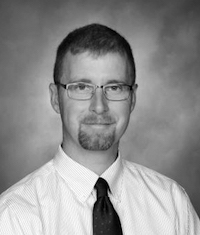
Dean E. Frank
Edgewood Middle School
Wooster, OH
Grades: 5–7
Students: 765
Region: Urban
• Building community partnerships
• Building a collaborative culture
I am very proud of our school’s accomplishments in serving all students, especially those children that face extra challenges. Our building leadership team had a “no excuses” model that led to powerful professional development in the areas of student engagement, visible learning, co-teaching, and trauma-informed instruction. Our team also developed new community partnerships with the Boys and Girls Club of Wooster and O’Huddle to best meet the needs of the students through year-round programming and one-on-one mentoring.
Oklahoma

Aspasia Angelou Carlson
John Marshall Mid-High Enterprise School
Oklahoma City, OK
Grades: 7–12
Students: 703
Region: Urban
• Teacher collaboration through professional learning communities
• Advocating for student voice
As an instructional leader, I implemented professional learning communities (PLCs) in order to foster teacher collaboration during common planning times. This began with professional development on the faculty’s beliefs, a new mission statement, and delving deeply into the content standards. Over the next two years, we continued to focus on effective instructional strategies and common formative assessments aligned with the standards. We celebrated double-digit gains with our students in a schoolwide prideful event, and the students created a video to share their excitement. Due to our academic gains over three years, the school was recognized as a model PLC by Solution Tree. Our state report card letter grade went up a full letter to a C, which helped increase school pride and rebuild the trust of our community.
Oregon

Nick Nelson
The Dalles High School
The Dalles, OR
Grades: 9–12
Students: 803
Region: Rural
• Cultural change associated with AVID
• Collaboration and staff student connections
The story I want to share deals with the introduction of AVID, Advancement via Individual Determination, and the expansion our AP program. In 2015–16, The Dalles High School was awarded two grants. The first grant enabled us to offer additional AP courses to all students. We sent teachers to AP summer training as well as purchased resources for the additional courses. The result was beyond our best hope. We expanded our AP participation to 25 percent of our grade 10–12 student population. Roughly 58 more students enrolled in our AP offerings. The second grant was for AVID. In 2016–17, we started with one AVID elective and launched AVID schoolwide. For 2017–18, we will add an additional AVID elective and expand the schoolwide effort to all subject areas. We expect the two electives’ enrollment rate to reach 40–45 students. Weekly AVID professional development activities are provided to teachers.
Pennsylvania

Todd Price
Montour High School
McKees Rocks, PA
Grades: 9–12
Students: 972
Region: Suburban
• Relationships with students
• Communicating with passion
Recognizing that we needed to place a greater emphasis on personalizing learning for our students, Montour High School implemented Spartan Personalized Learning Time (PLT), during the 2016–2017 school year. Spartan PLT affords our students the opportunity to have a voice in their learning, as each day they are able to select from an extensive menu of academic, extra/co-curricular, and wellness activities that are facilitated by our teachers, school counselors, administrators, and even our students! Not only has Spartan PLT afforded our students with personalized learning experiences, it has also empowered them to make decisions about their learning based on academic need, passions, and interests. Spartan PLT has impacted the culture of our school community far beyond what we could have ever imagined. We have seen such growth in our students this year, as they now understand the impact that they can have on their own success.
Rhode Island
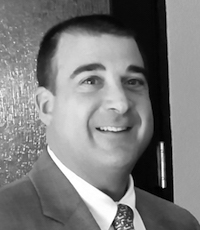
Christopher Savastano
William E. Tolman High School
Pawtucket, RI
Grades: 9–12
Students: 953
Region: Urban
• Curriculum mapping
• Assessment literacy
In November 2012, Tolman High School was designated a priority school by the state of Rhode Island and in the subsequent months, placed in warning status by the New England Association of Schools and Colleges accrediting agency. In the 2011–2012 school year, there were more than 3,700 suspensions recorded at Tolman High School. As principal, I have lead the implementation of the district’s transformation plan, targeting improvements in the culture and climate of the school, parental involvement, and student proficiency in literacy and numeracy while promoting instructional practices that reflect 21st century learning. Our school has made remarkable improvements in each of these areas. Our graduation rate has increased considerably from 59 percent to 83 percent. Our suspensions have dropped dramatically, highlighted by less than 300 occurrences last year. Additionally, the number of students taking an AP exam has increased from 15 to 94, while the number of students passing an AP exam has increased from 4 to 27.
South Carolina

Akil E. Ross
Chapin High School
Chapin, SC
Grades: 9–12
Students: 1,315
Region: Suburban
• Creating positive school culture
• Sustaining academic achievement
We define success as the ability to maximize a student’s potential—mind, body, and spirit. Schools shape our future and we take this responsibility very seriously. Our goal is to continuously improve school culture until all students are able to partner with the school to pursue their passion. As a former college football player, I learned how team performance is determined by the quality of that team’s culture and climate. Culture is what the team does (practices and procedures) and climate is how the team feels (spirit and motivation). As a result, we developed the rally cry, “We are a thousand passions with one heartbeat.” This rally cry reminds us of our responsibility to make our school and community proud by doing our best and helping others. We may be different in many ways, yet our ability to create an environment with love as the central theme is our greatest success.
South Dakota

Bud Gusso
Douglas High School
Box Elder, SD
Grades: 9–12
Students: 714
Region: Suburban
• Communication
• Technology
Douglas High School (DHS) carries the proud, yet challenging distinction of serving the men, women, and children of Ellsworth Air Force Base. As a result, 10–15 percent of our population can change annually. Despite this challenge, I am very proud to have revitalized our career and technical education programs (CTE) and maintained a AFJROTC program carrying Distinguished Unit distinction for 12 consecutive years. In 2000, DHS lost its last CTE courses. We now offer 12 courses across five programs. CTE continues to grow and graduates are emerging with industry certifications. We’ve made an effort to ensure that our AFJROTC students have control over their performance goals. As a result, the program ranks among the top 10 percent of units worldwide carrying the Merit designation on numerous occasions. I’m proud to have been 2013 and 2017 Region 7 Principal of the Year, a member of the South Dakota Association of Secondary School Principals Executive Board, and a School Administrators of South Dakota delegate.
Tennessee

Mel Brown
Mt. Juliet High School
Mt. Juliet, TN
Grades: 9–12
Students: 2,111
Region: Suburban
• Motivating/growing students and staff
• Accountability
Over the past several years, Mt. Juliet High School (MJHS) has focused on increasing rigor. Our teachers have revamped their curriculum, taught literacy in all subjects, and practiced schoolwide learning in skills where our students struggled. Our students’ growth testifies to its success. From 2011 to 2016, our overall ACT composite score grew from an 18 to 22. In each of those years, MJHS was chosen as a Reward School by the state of Tennessee for outstanding performance and progress. Additionally, MJHS was ranked by U.S. News and World Report as an AP Silver Medal School. MJHS has grown its AP program from 241 tests taken in 2010 to 1,100 in 2014. Our scores on state mandated tests have grown across the board; algebra is one example, as we were ranked 88th in the state in 2009 and 10th in the state in 2015. We are proud of our students’ and teachers’ hard work.
Texas

Steve Williams
Randall High School
Amarillo, TX
Grades: 9–12
Students: 1,650
Region: Suburban
• Student connections
• Maintaining growth in a school over an extended period of time
One of our most successful major initiatives over the past several years has been advocating at a high level the importance of connecting with all students. Without a strong teacher-student connection, learning is unable to happen with many of our students, but with it, student success is almost guaranteed. We feel that strong student connections is the secret to educational success. They ensure that teachers will feel a deeper level of job satisfaction, along with a high student success rate.
Utah

Bart Peery
Salem Hills High School
Salem, UT
Grades: 10–12
Students: 1,239
Region: Rural
• Improving school culture
• Changing the master schedule to provide more time for learning
In an effort to improve student learning, we focused on the formula of learning as the constant, with time and methods as the variables. We took a hard look at our brutal facts and found that our math success rate wasn’t acceptable. We decided to change our master schedule in order to give students—especially our incoming sophomores—more time in math. We adopted a five period/day block schedule and provided math every day for most students. We have had a steady increase in our school accountability reports in math over the four years that we have used this model. But the real improvement has been in the number of college concurrent enrollment and AP classes that our students are taking. We have tripled our enrollment in these classes and we are working toward our goal of having all college-bound students complete their math general education requirements before graduating.
Vermont
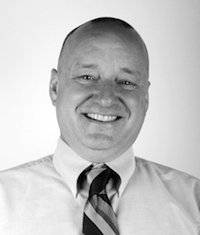
Steven Perrin
Brattleboro Union High School
Brattleboro, VT
Grades: 9–12
Students: 740
Region: Rural
• Collaborative structures with staff
• Proficiency based learning
At my school, we take flexible pathways for students very seriously. We had a student arrive at our school as ninth grader with a third-grade reading level and no home support for remaining in school. Due to a unique combination of apprenticeships and perseverance by staff members, he has graduated from high school and now runs a small business.
Virginia
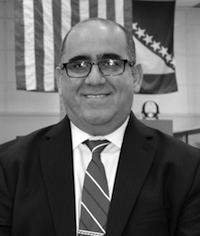
Cherif Sadki
Gar-Field High School
Woodbridge, VA
Grades: 9–12
Students: 2,501
Region: Suburban
• Culturally responsive instruction
• Teacher evaluation
I lead by serving to make a difference in each student’s life. I am accessible to students, parents, and my staff by being visible during the instructional day and for extra-curricular activities, while also modeling genuine caring. Each year, I provide professional learning opportunities for faculty and last year, I demonstrated best instructional strategies for English learners by co-teaching a class. Our school’s cultural statement was conceived with the participation of the school community: “One Vision. One Team. One School.” Stakeholders engage in data analysis to identify areas of growth within a continuous improvement model. We are the first high school to serve dinner and second-chance breakfast. During one month, more than 12,000 breakfasts were served for a total student membership of 2,500 students and dinner was provided to 2,154 students who remained at school for after-school activities and remediation with school funds providing transportation four days a week.
Washington
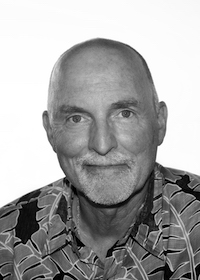
Dan Besett
Woodrow Wilson High School
Tacoma, WA
Grades: 9–12
Students: 1,239
Region: Urban
• Interpreting data and creating action plans for improvement
• Interviewing and hiring the best staff
Our school needed data that showed we offered a safe and competitive academic, athletic, and activity program that would accommodate any student regardless of their needs. We needed to communicate this success with our community. It took us approximately two years to begin showing measurable success with state testing scores, safety, attendance, climate surveys, and stabilization of our enrollment decline. We achieved a defining moment a little over five years after my first staff meeting. In 2011, we received our first School of Distinction Award. This is a state award recognizing the top 5 percent of all schools showing the greatest 5-year average of growth in reading and math standardized test scores and graduation rates. We have earned this prestigious award an unprecedented six times in a row. We continue to add to our list of goals and expectations for all programs every year.
West Virginia
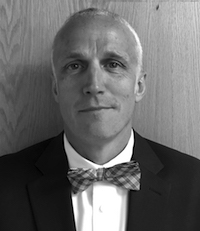
George Aulenbacher
George Washington High School
Charleston, WV
Grades: 9–12
Students: 1,074
Region: Suburban
• Building positive relationships with staff and students
• Rethinking how we “do” school
Our school motto, “With Opportunity Comes Responsibility,” allows us as a staff to have a fluid and meaningful learning experience at George Washington High School. Over the past six years, we have increased our graduation rate to 92.80 percent, increased our AP/dual course offerings, and implemented a STEM Magnet Program. We are continuing to look at how we “do” school to meet the needs of our students and community.
Wisconsin
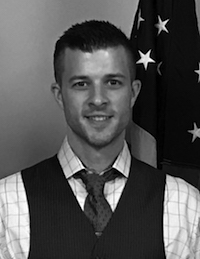
James Murray
Waukesha STEM Academy
Waukesha, WI
Grades: 6–8
Students: 336
Region: Suburban
• Conversations that dive deep into disruptive innovation in education
• Leading large crowds with a great sense of humor
I began my work with learners and young heroes at a young age, when I volunteered at a summer camp for youth with Muscular Dystrophy. I have since pursued my dream of moving education forward for more than 15 years, carrying the thought that if those young superstars could battle through such a difficult journey and enjoy life every single day, why shouldn’t every young learner have the same optimistic outlook on education and life beyond the four walls of a school? Success is within reach for everyone! Constantly designing new avenues and innovative pathways for students, I have realized my goal for all students to apply school content in real-life contexts, growing college and career citizens well beyond what a legacy model typically provides. Four years ago, courses and seminars based on age became extinct at our school. Competency-based pathways were introduced, and student voice and choice became the ultimate drivers for project-based learning.
Wyoming
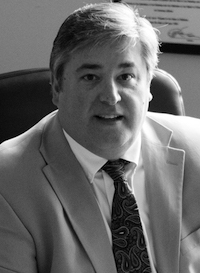
Tracy Ragland
Newcastle High School
Newcastle, WY
Grades: 9–12
Students: 220
Region: Rural
• Concurrent enrollment
• Licensing policy
Newcastle High School (NHS) has had a very successful experience with its concurrent enrollment program. NHS developed a program for students who wanted to take college-level classes during their high school career. Our relationship with Eastern Wyoming College has led to students from our rural school to have an opportunity to earn an associate degree during their high school career. The development of the program was fostered by the whole teaching staff at NHS. College-level classes are offered not only in the core area, but also in all of the vocational classes offered.
